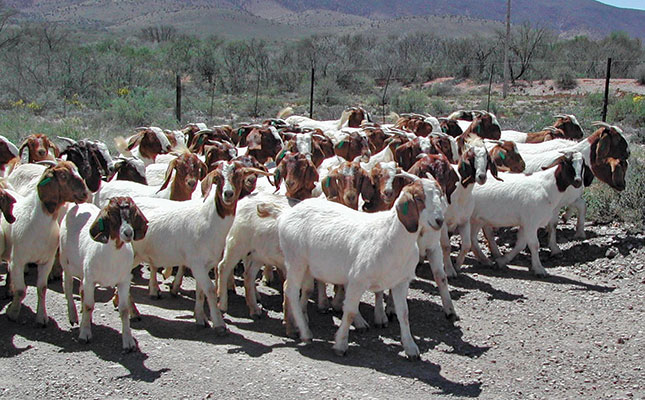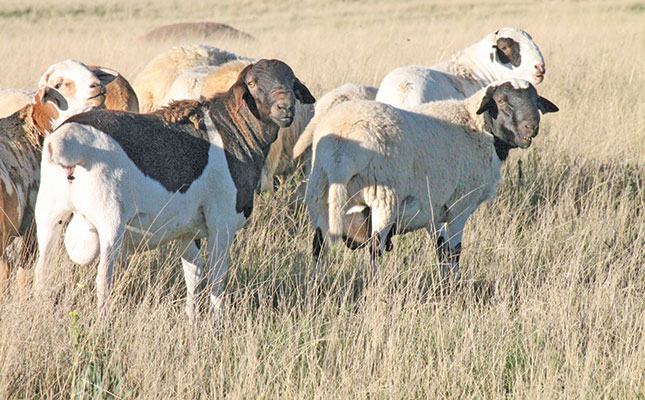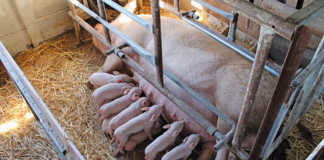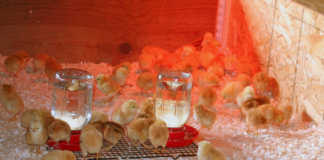
Photo: Roelof Bezuidenhout
It’s a pleasure to farm with goats once you understand their needs. Generally, they’re easy-to-care-for animals that will reward you well if you look after them properly.
Once everything is in place – as set out in previous articles – your main aim should be high kidding and weaning percentages.
You should therefore plan your kidding season for the optimal time of the year – when plenty of food is available until after weaning.
If there’s enough feed in the veld to last until at least three months after kidding, your kid crop will grow out well without the need for expensive supplements.
(This is more difficult to achieve with Angora goats as they have a restricted breeding season – usually from February to April.)
Naturally, the more kids your goats have, the greater the demands on you as a manager, as you will need to ensure that kids don’t lose their mothers, that every kid has enough milk, and that the flock stays well-fed and healthy.
In addition, try to time your kid crop so that you can sell the maximum number of goats when the demand for goat meat peaks – at long weekends and towards the end of the year.
Never neglect your flock
Most meat goats look after twins easily, but triplets sometimes suffer and might require special attention from you.
Some managers have the knack of getting a mother of a single kid, which has enough milk, to adopt the third kid.
Bottle-feeding also works, but is expensive. The easiest way to farm with goats is simply to leave the rams with the flock throughout the year and let the ewes lamb in the veld. This presents three difficulties, however:
- The rams will mate with their own daughters, causing inbreeding. It’s a much better idea to keep the rams away from the ewes until you can put them to the ewes in a controlled manner.
- Although letting the ewes kid and raise their offspring out in the veld is less labour-intensive and results in healthy offspring, it can only work if they are reasonably safe from predators, cold snaps and heat waves. Can you ensure this?
- It is difficult to count the kids until well after the last ewe has given birth.
Goat farmers with large flocks normally try to keep pairing time as short as possible – six weeks or so – so that the kidding season stays as short as possible.
This minimises the period of intensive care and makes dosing, dipping, weaning, selection and marketing easier, as the kids will all be more or less the same age and size.
Pairing
- Ewes should be gaining weight during this period, but they should not be too fat.
- Use one ram for about 30 to 40 ewes. Be sure the rams are healthy and in good condition.
- Try to pair young ewes separately from mature ewes.
- Herd the flock every now and again to make sure the rams mix thoroughly with the ewes.
The importance of correct feed
Most foetal growth takes place in the last month before birth – so it’s a good idea to provide extra feed as well as vitamins A, D and E at this time.
Remember that your aim is to maximise the number of kids and that this may require extra work if there are triplets. Above all, you will need to ensure there is enough feed for all the kids.
Take care too to provide sufficient shelter for them. Kids are sensitive to cold, wet conditions, as well as heat. To prevent abortions during drought, supply extra feed after about two months of pregnancy.
Care after kidding and weaning
Some farmers keep the kids behind in a kraal while letting the ewes out to graze. While this prevents losses from predation, it is not good management; the kids can lose their mothers or pick up diseases and parasites.
Rather use small camps that have been rested and have shade and shelter. Place up to 20 ewes in a camp, allow them to kid and let them stay with their kids for about three weeks before allowing them out into bigger groups.
Number each ewe and kid using different colours for singles, twins and triplets for easy identification and record-keeping.
Mark and sell ewes that have poor milk or do not raise kids at all. When selling surplus goats, culls, old ewes or rams, make sure you know the going liveweight rate in R/kg for each type.
This varies from season to season and buyer to buyer, so look for the best price. As with any branch of farming, the market has demand and supply cycles. Recently, for example, goat meat prices have decreased due to live goat imports from Namibia.
Besides being a freelance journalist specialising in agriculture, Roelof Bezuidenhout is a fourth-generation Karoo small-stock farmer, specialising in Merino and Dorper sheep and Angora goats.













